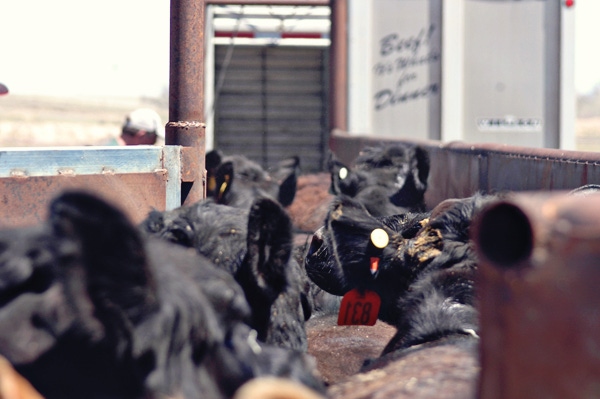Huh? Some See Industry’s Beef Quality Progress As Bad News
September 18, 2014

I was sitting with a group of bull breeders this week who were lamenting the progress the industry is making in quality grade. Yes, you read that right. The argument went along the lines that the Choice-Select spread is no longer as big of a deal as it once was; the premiums now are for the upper 2/3 Choice and that shift has occurred because of better genetics.
Fair enough. But here’s where it got interesting: these breeders, who represent a high-marbling breed, also argued that the genetic progress they have made to date makes it possible to incorporate some higher yielding breeds into the equation. Their thought is that by improving their cattle individually, and the industry’s cattle collectively, they had actually decreased their market share.
Since I love a good argument as much as anybody, especially when it involves cattle, here are my two cents. I would argue that while the economic signal may have shifted to some degree, the message is the same and the market share data doesn’t back up their claims.
More importantly, while it’s difficult to say for sure, we can’t ignore what that improvement has meant to beef demand. We’ve all been amazed at the strength of beef demand in these higher prices. Would that have been possible without the reduction in poor eating experiences that likely come with more upper Choice beef on the market? I have no data, but anecdotal evidence from beef consumers indicates that they are happier with the product we are producing today than they were 10-15 years ago.
With today’s price levels, it seems that everyone is looking for a reason to make it go lower. That was amazingly obvious in the reaction when USDA’s latest corn crop estimate came in at 14.4 billion bu. The logic went that cheap grain eventually means cheap meat, as it encourages more feeding and to heavier weights.
However, the heavier weight dynamic isn’t much of an argument because the incentive to feed to heavier weights has long been in place and is not changing. And it’s likely that any incremental increases in carcass weight will be harder to achieve. It’s true that cheaper costs of gain allow cattle feeders to produce pounds more competitively, and thus allows the marketplace to send the message to expand. So from a long-term perspective, a bigger crop likely will equate to more expansion. But in the short term the effect is marginal at best.

Can You Tell Profit When You See It?
Enter our 2014 BEEF Efficiency & Profit Contest & you could win $1,000 cash (indvidual) or $5,000 in Merial product (feedlot group). Enter here!
Certainly cheaper corn should lead to more pork and poultry production, which is never a good thing from the cattle industry’s standpoint. But I’m having corn silage priced to me at less than $40/ton; that�’s a pleasant change from last year, when it was over $50 in our area. It is a whole lot more fun to figure winter ration costs when it is 20% cheaper or more compared with a year ago.
I didn’t buy the argument that $8/bu. corn was good for the beef industry and I find it hard to believe that corn in the low $3s is now somehow bad for the industry. The one thing I do know is that I’m not complaining about going into the fall with a 14 billion-bu. corn crop. Cheap corn, or the cost reduction in any major input for that matter, will encourage beef production, and yes, that puts downward pressure on prices eventually. But don’t we want a growing, bigger industry?
The name of the game is margins and not prices anyway. I for one will not be staying up at night because corn prices are lower. It is a challenge I welcome. And the way I figure it, with roughly half the corn still being used for energy production, every increase in corn production equates to only about half the impact it used to have. If meat production is more lucrative than energy production, I can’t help but think this is an exceedingly good time to be in the cattle business.
I’m not crazy enough to think that the marketplace no longer works; we live in an ultracompetitive environment, and the market will always be right. But it has been a while since we have been on the right side of the curve and I’m going to enjoy it while it lasts.
The opinions of Troy Marshall are not necessarily those of Penton and the Farm Progress Group.
You might also enjoy:
Enter Now! 2014 BEEF Efficiency & Profit Contest
10 Utility Tractors For 2014 That Offer More Power & Comfort
Just When We Thought The Bubble Might Break, The Cattle Market Surprises Us
70+ Photos Honor The Hardworking Cowboys On The Ranch
Photo Tour: World's Largest Vertically Integrated Cattle Operation
Do You Want Progress Or Change In Cattle Breeding?
How To Prevent & Treat Pinkeye In Cattle
Two-Step Weaning System For Beef Calves
About the Author(s)
You May Also Like
.png?width=300&auto=webp&quality=80&disable=upscale)


